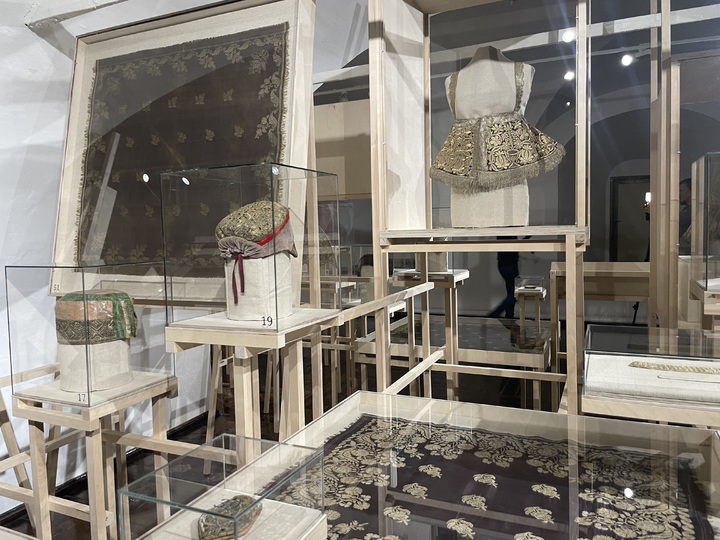Gold-woven beauty was shown in Suzdal
[ad_1]
The city celebrated its 1000th anniversary with an exhibition with a symbolic name
Silk sundresses, kokoshniks embroidered with gold thread, scarves of the finest embroidery. One word – beauty. This is the name of the exhibition in the Bishops’ Chambers of the Suzdal Kremlin, with which the city is opening its 1000th anniversary. The exhibition includes 66 exhibits from the collections of the Vladimir-Suzdal Museum-Reserve, which are shown in simple wooden display cases. The laconic design of the exhibition (designed by Kirill Assa and Nadezhda Korbut) emphasizes the subtlety and complexity of the embroideries.
For its 1000th anniversary, Suzdal was transformed. The Kremlin has finally completed many years of restoration. Experts have finally brought the entire ancient complex, which is included in the UNESCO World Heritage List. The last in line was the cathedral bell tower, erected in the first half of the 17th century: its restoration took two years, in the summer the cross was returned to the dome, and then the restoration of other losses was completed. Now the white stone ensemble appeared in all its glory.
“We worked according to the principle – do no harm,” says Ekaterina Pronicheva, director of the Vladimir-Suzdal Museum-Reserve, to MK. – Our task is to reveal the beauty of the monuments, to make it interesting and comfortable for visitors here, for which we have made easy navigation. And the first project with which we are opening the anniversary was the “Beauty” exhibition. We wanted to highlight the beauty of the presented objects: the functionality of these unique things has been largely lost, but the emotional impression that they were intended to produce is preserved.
Looking at these exhibits, you really just want to repeat: beauty! Visitors are greeted by a silk sundress, shimmering from soft pink to light orange. It’s hard to believe, but it belonged to a peasant woman, not a noblewoman. And here is a kokoshnik, embroidered with plant patterns with rare scarlet flowers. He returned to Russia from the White Guard Museum in Paris. Probably one of the emigrants took out a family heirloom during the years of the revolution, and then, leaving for another world, donated an expensive item to the museum. Its exact history is not known. But the work is very delicate.

Such things took a long time to create and were then passed on from generation to generation. Here, for example, is a velvet jacket decorated with intricate patterns. The craftswoman spent at least six months of her life creating it, devoting 4 hours daily to weaving. Girls learned to embroider from childhood – it was impossible to get married without a dowry. The girls approached self-presentation with special trepidation and diligence, embroidering their trousseau for years: their fate depended on the outfit.
“Before Peter’s reforms, rich fabrics were mainly imported,” says Natalya Kondrashina, a researcher at the museum-reserve and consultant for the “Beauty” exhibition. – Here they are represented by samples of Persian velvet. And from the middle of the 18th century, merchant manufactories were established everywhere: domestically produced fabrics were in no way inferior to foreign ones. By that time, the basic forms of folk costume had already developed. On our land there was a Moscow round and swing sundress, decorated with gold and silver embroidery. This is the one that opens the exhibition – it belonged to a wealthy peasant woman.
The funds of the Vladimir-Suzdal Museum-Reserve contain more than 500 thousand exhibits. Most of them require restoration and the best reason is a new project. In the summer, the museum is preparing to show other restored objects at the exhibition “Russian Phoenix: Suzdal Land”, which will be held in collaboration with the Moscow Kremlin Museums. In the meantime, until spring you can look at the gold-woven “Beauty” in the Bishop’s Chambers.
[ad_2]
Source link






